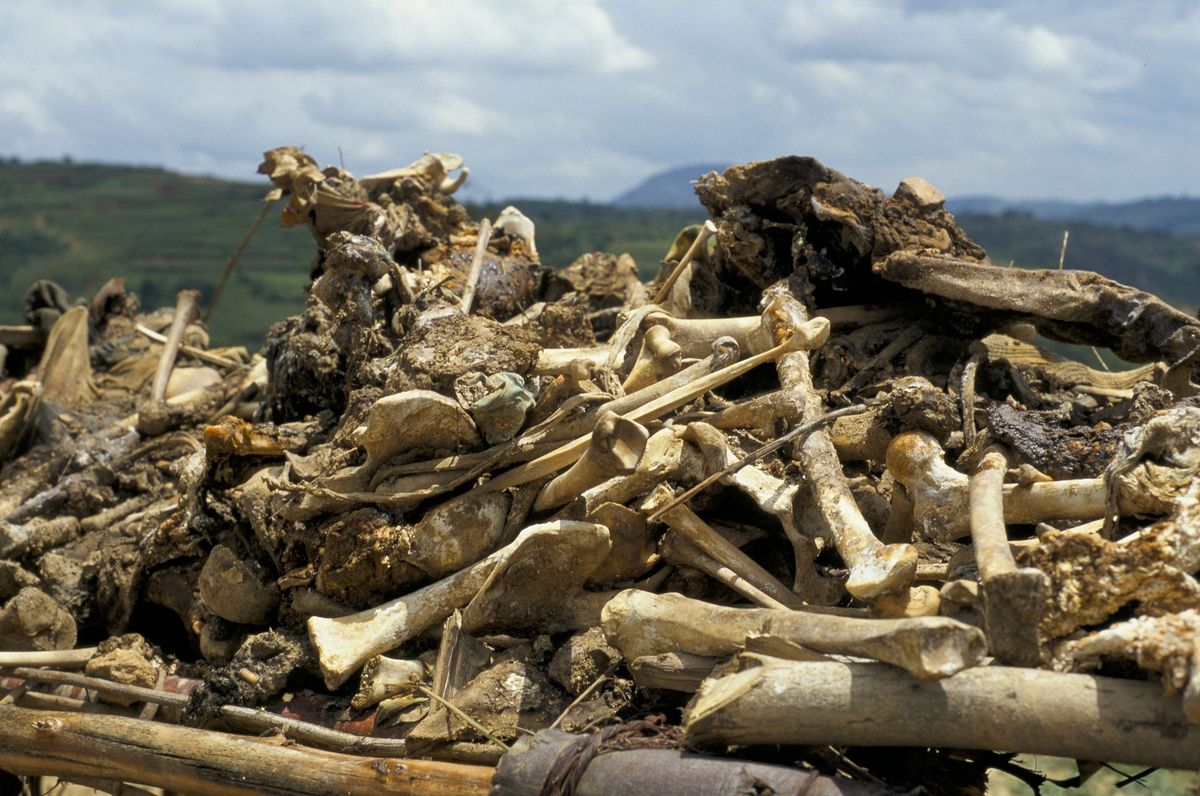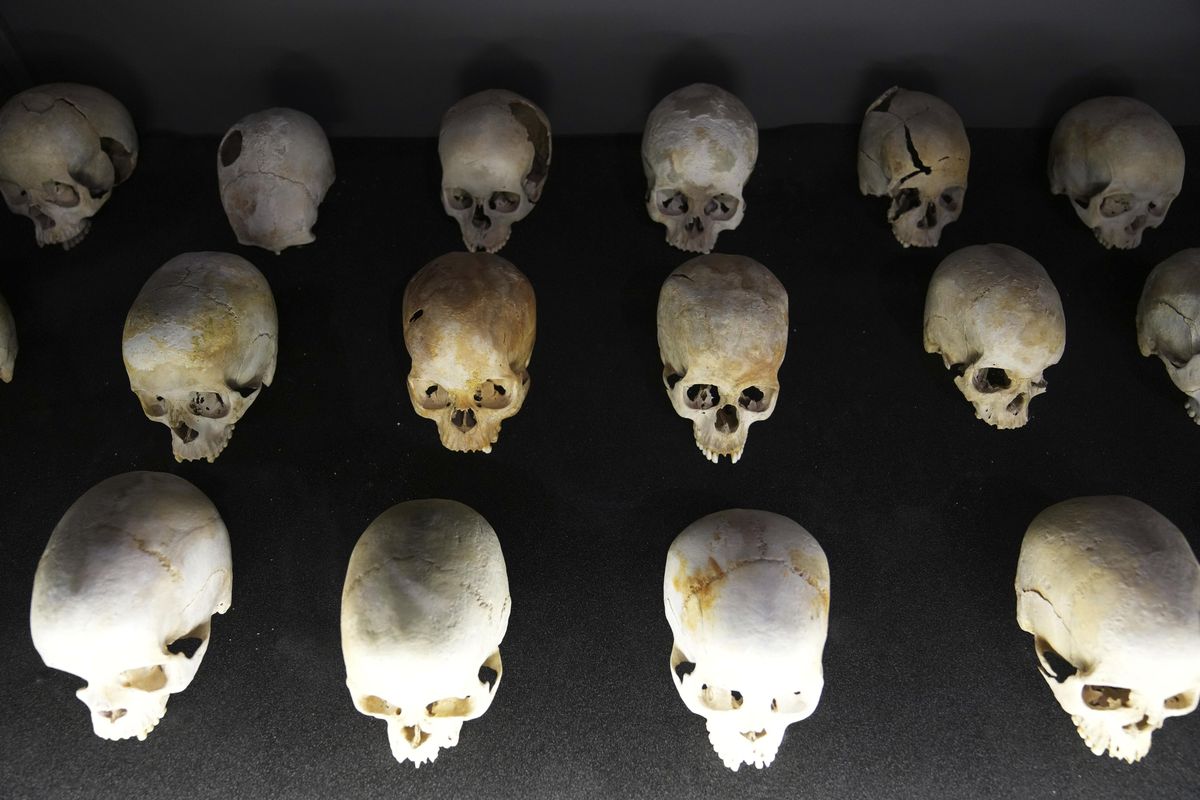The conflict between Hutu and Tutsi has deep historical roots dating back to pre-colonial times.
The Hutus, who came to Rwanda from present-day Chad in the 11th century, pushed the Pygmy Twa tribes into the forest in the mountains. Apparently, the Tutsi, who were shepherds and warriors, followed them from the 14th century. They controlled the area and formed the Kingdom of Rwanda with a succession of dynasties from the 15th century until it became part of German East Africa in the 1890s. In 1916 Rwanda-Urundi was annexed by the Belgians.
The Germans and after them the Belgian colonists mainly interacted with the Tutsi elite who owned the land because it was always easier for the colonists to leave the existing structure and take it over. Even the Tutsi king left their leaders to the Hutus.
However, the Belgians took a step during their reign that increased the brutality of the genocide. They introduced ethnic identification cards, meaning the wearer was Hutu, Tutsi or Tuwa, which made their bloody work easier for the militants.
Photo: Profimedia.cz
Ethnicity-marked identity cards in Rwanda
After World War II, Rwanda-Urundi came under United Nations administration and the Belgians had to prepare it for independence. They wanted to involve the majority Hutus in the administration of the country, which the Tutsis opposed. After the death of King Muttara III in 1959. The Rwandan revolution erupted when a Hutu leader was assassinated. Although he survived, the rumor that he was dead led to the massacre of Tutsis.
Hutus ruled an independent republic
A referendum in 1961 decided that the country would remain a republic, marking the end of Tutsi elite rule. Rwanda and Burundi gained independence on 1 July 1962.
A year later, the Tutsi who had fled to Burundi decided to take power again by force, but failed. By 1964, 300,000 people had fled Rwanda to Uganda. The death toll from these protests is estimated to be as high as 150,000.

Photo: Profimedia.cz
Victims of Genocide in Rwanda's Kaduha Province
In 1990, exiled Tutsi and their descendants founded the Rwanda Patriotic Front (RPF), which captured a small part of the country's north in the fighting. A cease-fire came in 1993, but Hutu-dominated radical Hutu who founded the Hutu Power movement refused to return.
Roles of Propaganda
Hate propaganda contributed to the unleashing of genocide, which is why the symbol of genocide is sometimes said to be the knife and the radio. Already in 1993, 30,000 knives were purchased, and even before that guns were purchased. Radio played an important role in spreading the propaganda because most of the people there were illiterate and literate. 1.5 million people out of 7.5 million.
Hatred was mainly disseminated through the station RTLM and the magazine Kangura (Awareness), founded by Felician Kabuga, who paid Interahamwe militias. He published Hutu Baath, which had already been compiled by Hassan Nkes in 1990.

Photo: Brian Inganga, CTK/AP
Skulls of Genocide Victims at Kigali Memorial
It opposed any Hutu relationships with Tutsi women. If he married a Hutu or kept her as a concubine or secretary, he was labeled a traitor. A traitor who has a Tutsi as a business partner, invests his or the government's money in a Tutsi company, borrows money from a Tutsi, or conversely, gives a loan to a Tutsi or obtains import licenses. Tutsi. “The Hutus must be firm and vigilant against their common enemy, the Tutsis,” the doctrines said.
In the campaign, the Tutsis were referred to only as cockroaches (inyenzi) and mukanda, meaning collective work to be carried out. The term inyenzi has been used since 1963 because Tutsi fighters attacked at night and were invisible during the day like cockroaches. At first it referred only to RPF fighters, but later to all Tutsis. The verb kukora, meaning to work, was used in the sense of working to exterminate the Tutsis. Like any job, it requires tools, namely tools. They represent knives and guns. A link about removing remaining brush or weeds was often used.
It was the hate-mongering propaganda that led to the genocide, the death toll growing so rapidly. According to more sober statistics, 5,000 people were killed every day.
The Hundred Days of Hell of the Rwandan Genocide killed at least half a million people
History

Exodus of the Hutus
As the international community did not intervene against the genocide, the Tutsi Rwandan Patriotic Front attacked from the north and took control of the entire country by mid-July. After the defeat of the Hudu militants, a government was installed when Bastier Bismungu, a member of the Hudu tribe, became president, but the key position was held by current President Paul Kagame, who served as Minister of Defense and Vice President. . RPF became the leading party in the country.
As the RPF began to advance, the exodus of Hutus took place. Already by the end of April, a quarter of a million Hutus had fled to Tanzania in the east of the country, where half a million people had fled. They also spoke for the first time about the atrocities committed by the neglected Tutsis.

Photo: Profimedia.cz
Arms seized at Rwanda-Zaire border
The United Nations High Commissioner for Human Rights, led by Robert Gerzoni, which investigated the conditions for the rapid return of the Hutus after the genocide, was in some places an undisclosed report after interviewing hundreds of witnesses. RFP and killings are also systematic persecution of Hutus. Some are said to have been ordered directly by Kagan. Between April and August, 25,000 to 40,000 people were to be killed. Massacres by the RPF gained attention in April 1995 when several hundred but 4,000 Hutus were slaughtered in Kibeho refugee camp in Rwanda's Butare province. There were eighty to one lakh refugees in the camp.
Escalation of conflict
Conflicts between Hutu and Tutsi spread to other countries, most notably Burundi, where fighting between October 1993 and May 2005 left 300,000 people dead.
But they contributed to the outbreak of the Great African War in the late 1990s. In 1994, hundreds of thousands of Hutus fled to what was then Zaire. The Tutsis tried to persecute them, and they turned to the opposition leader Laurent-Dizire Kabila, behind whom Uganda stood. In 1996, he launched military campaigns against the declining dictator Mobutu Sese Seko.
Kabila overthrew Mobutu in May 1997, resulting in the deaths of 15,000 to 20,000 people. However, the conflict has not ended in Zaire, now renamed the Democratic Republic of the Congo. In 1998, Kabila decided to eliminate Rwandan soldiers so that they would not act as Rwandan puppets. In late July, he ordered the immediate withdrawal of all troops from Uganda and Rwanda. This sparked a rebellion by the Tutsi, who had settled in Congo for centuries, who formed the RCD forces with the support of Rwanda and Uganda.
Other countries gradually joined the war. The Kabila government was supported by Angola, Chad, Libya, Namibia and Zimbabwe, several countries mainly interested in accessing Congo's mineral resources. The war officially ended in 2003, but fighting continued until 2007. More conservative estimates put it at between one and two million lives, although the International Rescue Committee put it at 5.4 million.
Tribunals
In November 1994, the International Criminal Tribunal for Rwanda (ICTR) was established, based in the Tanzanian city of Arusha, and operated there until 2015. Of the 93 accused, it convicted 62, pardoned 14 and transferred the rest to national courts.
The leader Dioneste Bagasora was convicted and at his trial, the commander of the paratroopers, Alois Natabagus. Also sentenced were Defense Minister Augustine Bisimana, Commander of the Presidential Security Force Protise Mbaranya, and senior representatives of the Imbusamukambi militia, Jean-Bosco Barayakwisa and Hassan Nkes. Interahamwe militias and radio station RTLM could not get hold of businessman Felician Kabuga, who spread hatred against the Tutsis.

Photo: Profimedia.cz
Skulls of victims in Rwanda's Kaduha province
But most of the accused were tried directly in Rwanda by local courts. However, they were outnumbered, with 130,000 people detained, even though the prisons held only 18,000 places. After the genocide, only 244 of the 750 judges remained in office. Therefore, the Traditional Cacaca Courts were established in 2001, which heard nearly two million cases and interrogated one million people. In 2012, the courts were disbanded after criticism that defense lawyers played little role and were not appealed to regular court. They also do not deal with cases of RPF offences.
The establishment of a functional tribunal for Rwanda and the former Yugoslavia was an important step in better implementation of international humanitarian law and led to clarification of the term genocide and better prosecution of perpetrators and perpetrators of genocide. Since the 1990s, genocide has often been used to draw attention to the brutal behavior of one group by another, making it difficult to prove that it was actually genocide. The Rwandan genocide has all the hallmarks of genocide, namely the dominance of one group, in this case an ethno-clan group, as well as an attempt to completely exterminate other groups, to achieve that there are no Tutsis in Rwanda.
On the other hand, the accusation that Israel is committing genocide in the Gaza Strip is difficult to prove because Israel is not concerned with the liquidation of the Palestinians, but with the terrorist movement Hamas. However, statements by some Israeli representatives may contain incitement to genocide. Even Russia's genocidal intentions would be difficult to prove.
Macron apologizes in Rwanda over genocide not defended by France
the world
